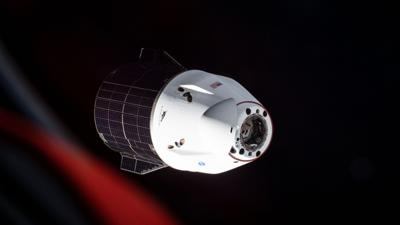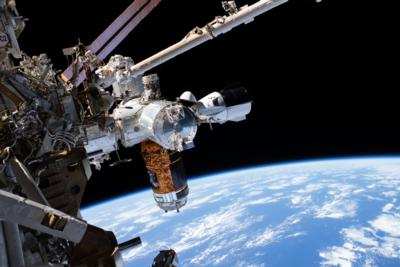The Short Trip from Remarkable to Routine
A SpaceX Dragon spacecraft carrying several thousand pounds of critical scientific hardware and crew supplies is on its way to the International Space Station.

Launched atop a company Falcon-9 rocket, the mission—dubbed SpaceX Commercial Resupply Service-28 (alternately, SpaceX CRS-28 or SpX-28)—lifted-off from Launch Complex 39A of NASA’s Kennedy Space Center at 11:47 EDT on the morning of 05 June 2023.
A series of extra-atmospheric thruster firings will establish Dragon C208 on-course to the ISS—at which the spacecraft is slated to arrive on the morning of 06 June. Upon rendezvousing with the space station, Dragon will dock autonomously to the space-facing port of the orbital facility’s Harmony module. Docking operations will be monitored by NASA astronauts Woody Hoburg and Frank Rubio.
Docking is scheduled to occur at approximately 05:50 EDT.
In addition to delivering station supplies, hardware, and a spate of foods evocative of a vegetarians-only garden party—e.g., apples, blueberries, grapefruit, oranges, cherry-tomatoes, and various cheeses—Dragon will deliver scientific and research payloads including a pair of International Space Station Roll Out Solar Arrays (IROSAs)—replaceable panels by which the station’s energy-production is boosted by twenty-to-thirty-percent. The IROSA’s aboard Dragon C208 are the third pair to be delivered to the ISS by a SpaceX Dragon capsule.
Also aboard SpaceX CRS-28 is an advanced climate-monitoring camera cobbled together by students of Toronto’s York University. Subject device will observe snow and ice coverage in northern Canada.
Additional payloads aboard SpaceX CRS-28 include Genes in Space-10, a student-designed DNA experiment sponsored by the ISS National Laboratory, and the next generation of seeds for NASA’s Plant Habitat-03 initiative, which studies the means by and degrees to which plants adapt to the space environment.

A number of CubeSats—a class of miniaturized satellite based upon a form factor consisting of ten-centimeter cubes—will also be conveyed to orbit via SpaceX CRS-28. These include SC-ODIN, a student-led Earth observation mission that sets out to enhance humankind’s understanding of particles suspended in Earth’s atmosphere; Moonlighter, a cyber test-platform devised to advance space cybersecurity by providing the national security space community an orbital platform from which to test and learn in real-time; and RADSAT-SK, a project jointly undertaken by the University of Saskatchewan Polytechnic and the Canadian Space Agency for the threefold purpose of validating and testing a new type of radiation dosimeter, testing the viability of high-concentration melanin as a radiation shield, and snapping orbital images of Saskatchewan.
Dragon C208 will remain docked to the ISS for approximately three-weeks before returning to Earth laden with several tons of cargo and research specimens. The capsule, presuming a nominal reentry and descent, will splash down off Florida’s Gulf Coast.
 NTSB Final Report: Cessna 177B
NTSB Final Report: Cessna 177B ANN's Daily Aero-Term (05.08.25): Final Approach Fix
ANN's Daily Aero-Term (05.08.25): Final Approach Fix Aero-News: Quote of the Day (05.08.25)
Aero-News: Quote of the Day (05.08.25) ANN's Daily Aero-Term (05.09.25): Estimated (EST)
ANN's Daily Aero-Term (05.09.25): Estimated (EST) ANN's Daily Aero-Linx (05.09.25)
ANN's Daily Aero-Linx (05.09.25)




